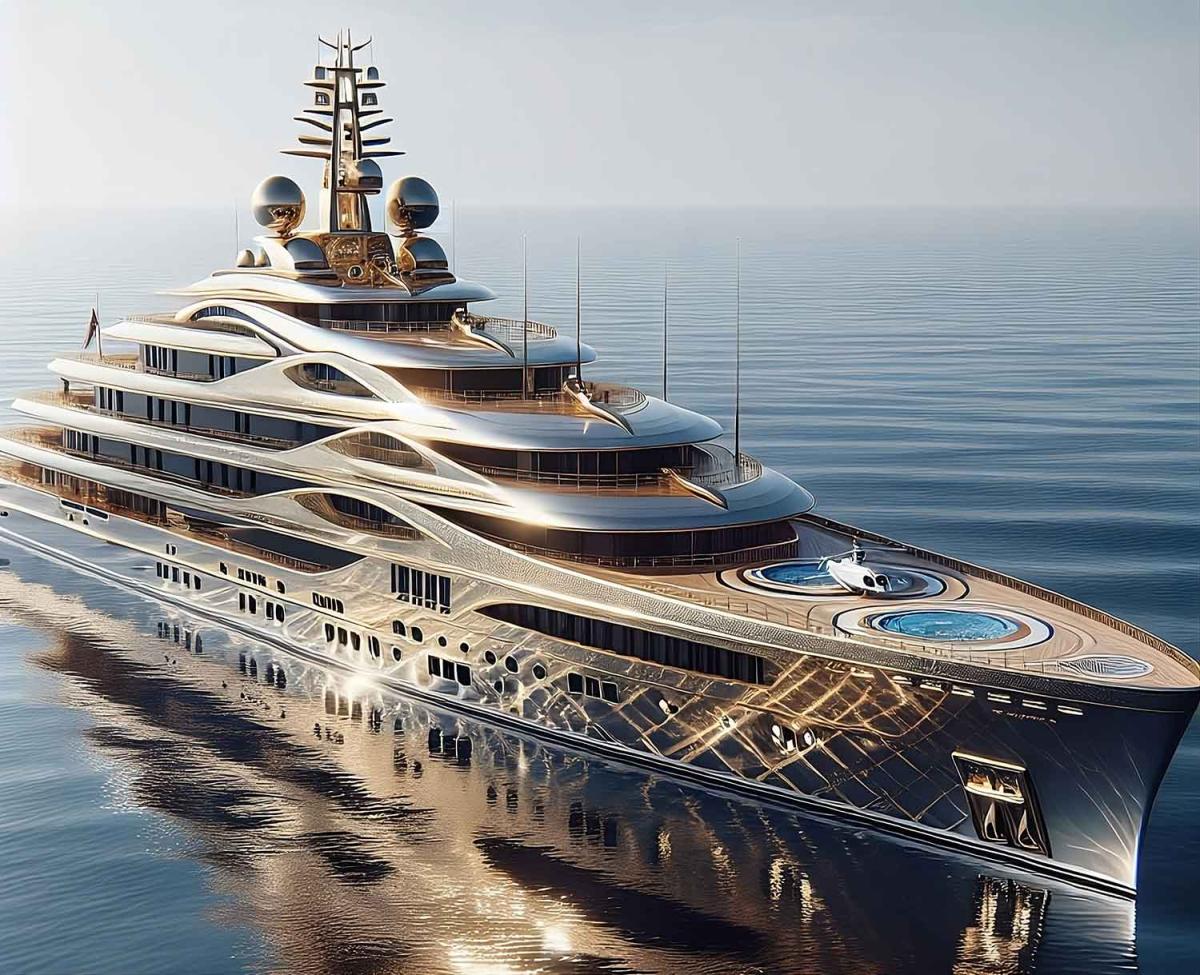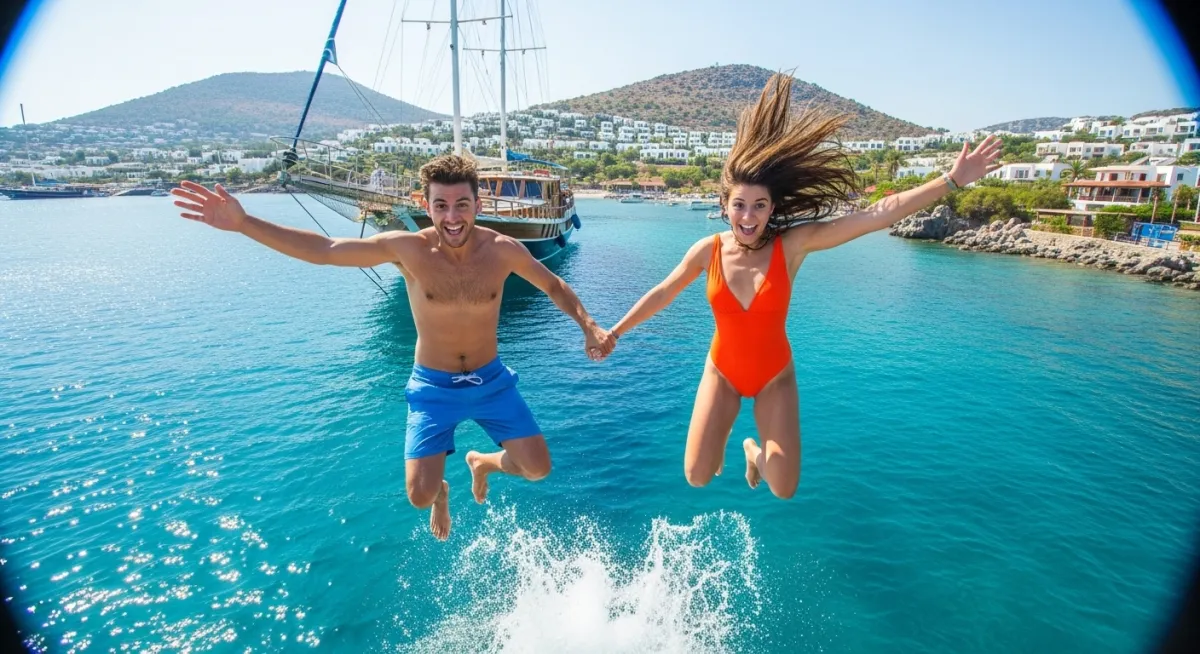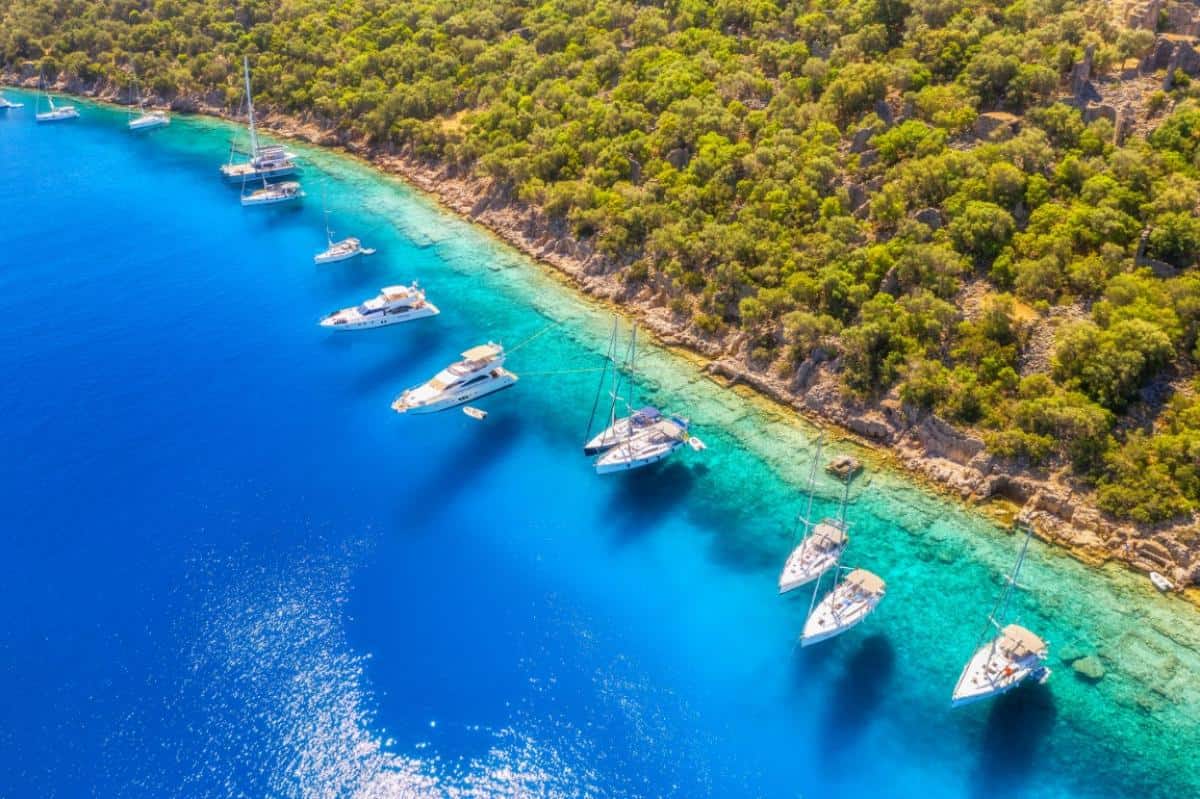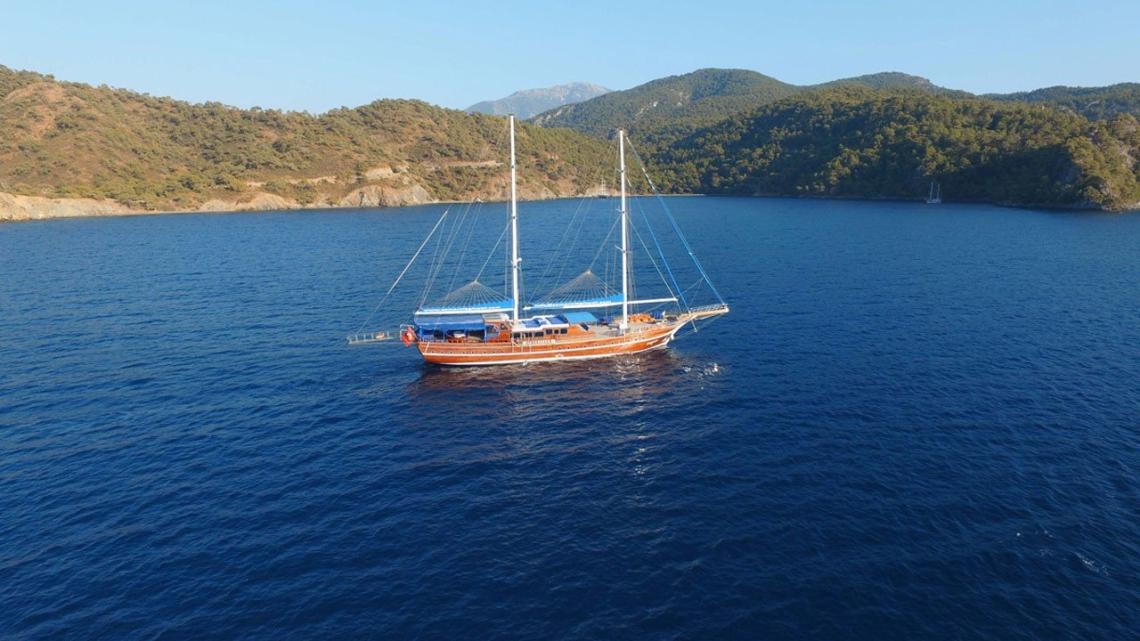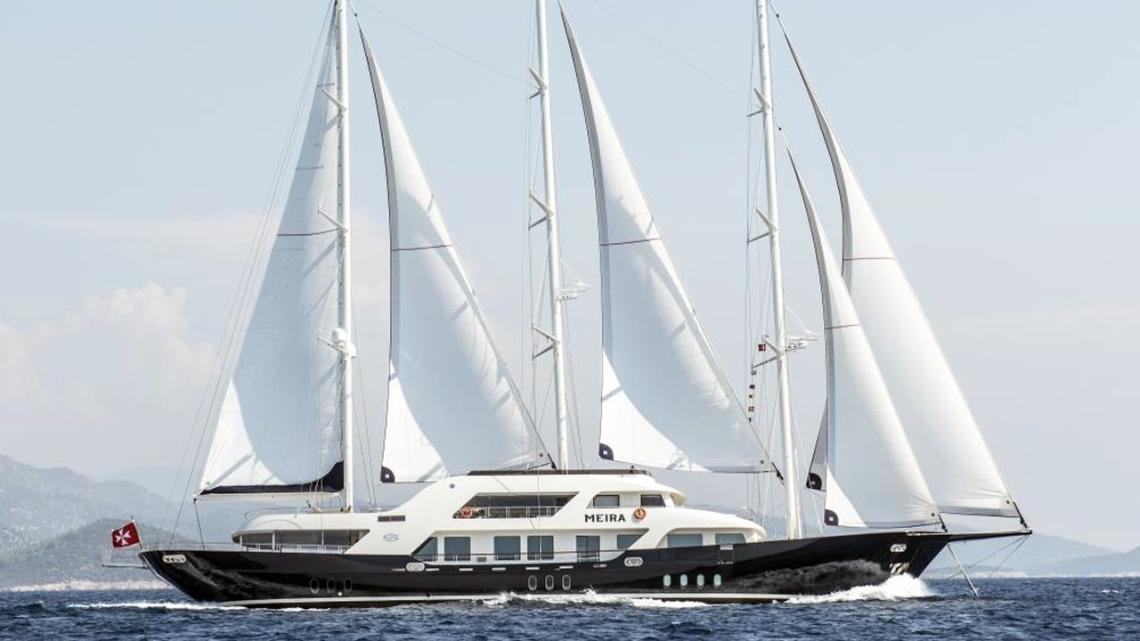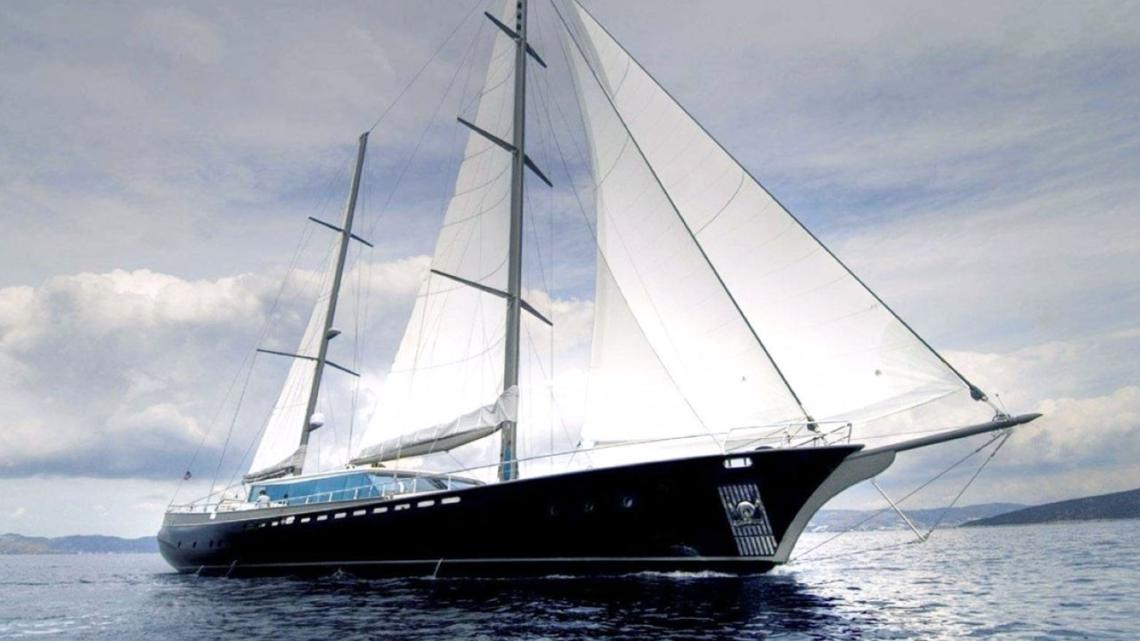
A traditional wooden vessel cuts through turquoise waters along Turkey's Aegean coast. No fixed schedule.
No crowded ports. Just hidden bays, ancient cities, and the rhythm of wind and waves. This isn't your typical cruise—it's a blue voyage, and it started with a writer's rebellion against modern life in 1925.
Most people think the blue voyage is just another name for a boat trip. They're wrong.
This movement began when Cevat Şakir Kabaağaçlı, known as the Fisherman of Halicarnassus, sailed from Bodrum with friends seeking freedom from Turkey's rapid modernization. He documented these experiences in Turkish literature, creating a philosophy that still shapes how we charter gulets today. His writings gave birth to what we now call the blue voyage tradition.
What Is a Blue Voyage?
A blue voyage means sailing Turkey's Aegean and Mediterranean coasts without rigid itineraries. You wake up in a secluded cove.
Swim before breakfast. Maybe anchor near sunken cities for snorkeling. The captain adjusts routes based on weather and your mood—something impossible on commercial cruises.
This distinctive approach to Mediterranean exploration combines natural beauty with historical sites, letting you discover heritage sites and ancient cities at your own pace. The original sailing philosophy rejected schedules entirely. Cevat Şakir and his groups of friends would sail for weeks, stopping wherever looked interesting. Modern charters balance this freedom with practical needs, but the core remains: nature and history guide your days, not a tour operator's clock.
Here's what separates authentic coastal voyages from standard boat rentals: wooden gulets instead of fiberglass motor yachts, crew who know every hidden bay along the Turkish Riviera, and routes that prioritize natural beauty over tourist hotspots. You'll visit heritage sites accessible only by water. You'll swim in coves where ancient traders once anchored.
Explore Turkey's Blue Voyage
Get insider tips on hidden bays and ancient cities

The Writer Who Started It All
Cevat Şakir wasn't planning to create a tourism movement. Exiled to Bodrum in 1925 for his political writings, he fell in love with the Aegean Sea and its fishing communities. He bought a traditional sponge-diving boat and started exploring with intellectuals, artists, and anyone seeking escape from Istanbul's chaos.
His writings described these journeys as "mavi yolculuk"—the Turkish phrase for coastal sailing adventures. The name stuck. These accounts established the foundation of Mediterranean sailing history, documenting routes and experiences that would inspire generations.
By the 1950s, Turkish intellectuals were chartering boats to follow his routes. By the 1970s, foreigners discovered this slower way to see Turkey's coast. Today's luxury yacht rental industry grew directly from his philosophy.
Cevat Şakir wrote extensively about these sailing adventures, publishing essays and books that celebrated the Aegean Sea and its coastal communities. His most famous work, "Mavi Yolculuk" (The Blue Voyage), became a cornerstone of Turkish literature. The book chronicled his sailing experiences and philosophical reflections on freedom, nature, and escaping modern constraints.
What Cevat Şakir rarely mentioned in his romantic accounts: the physical discomfort of 1920s sailing. No refrigeration. No engines. Sleeping on deck in all weather.
Modern Mediterranean voyages keep the spirit while adding private cabins, air conditioning, and skilled chefs. You get the freedom without the hardship.
Routes That Defined the Movement
The original sailing routes connected Bodrum to the Greek islands, weaving through the Dodecanese before returning along Turkey's coast. Cevat Şakir loved visiting Symi Island, Datça Peninsula, and the Gulf of Gökova. These places are now key stops on Turkish Riviera charters.
| Route | Duration | Key Stops | Best For | Conditions |
|---|---|---|---|---|
| Bodrum-Gökova | 7 days | Cleopatra Island, Sedir, English Harbor | First-timers, families | Calm waters, sheltered bays |
| Bodrum-Greek Islands | 10-14 days | Kos, Symi, Rhodes | History buffs, longer trips | Open sea passages, permit needed |
| Fethiye-Göcek | 7 days | Butterfly Valley, Ölüdeniz, 12 Islands | Nature lovers, water sports | Excellent snorkeling, active routes |
| Marmaris-Datça | 7 days | Bozburun, Selimiye, Knidos | Quiet bays, authentic villages | Fewer boats, peaceful anchorages |
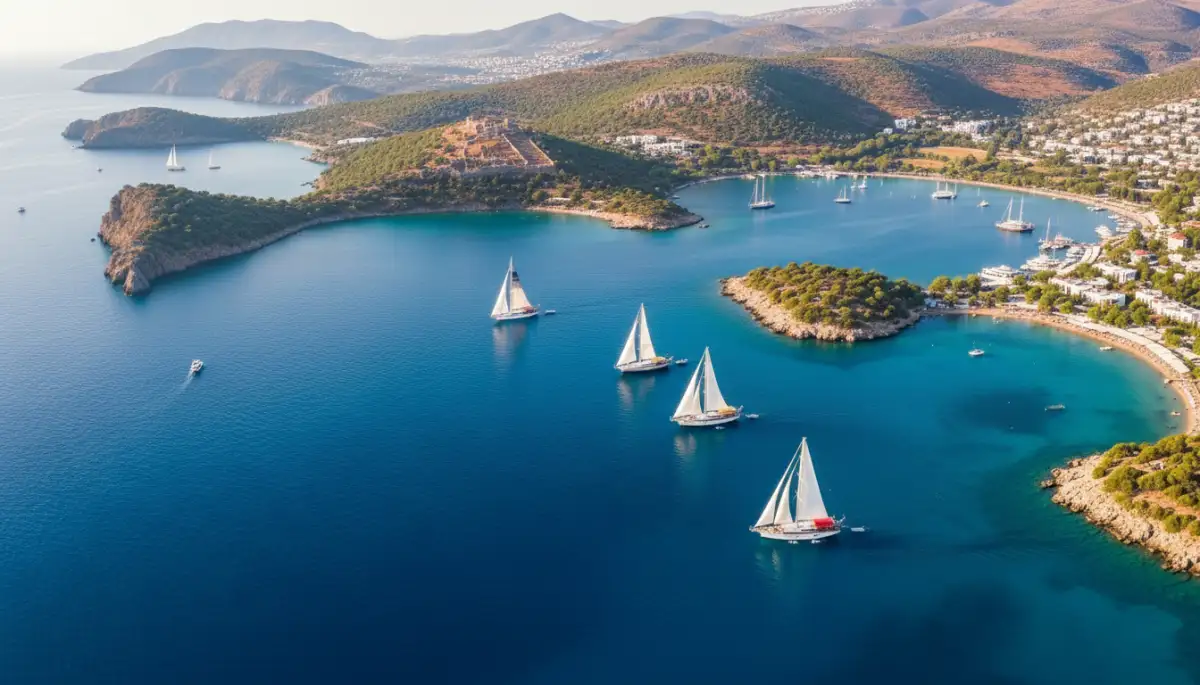
These routes reveal something surprising: the most popular isn't always the best. The Bodrum-Gökova circuit gets crowded in July-August, while the Marmaris-Datça route offers similar beauty with half the boats. Charter operators rarely mention this because Bodrum commands premium prices.
For calm waters ideal for families, the Gökova Gulf offers protected anchorages with shallow swimming areas. The Fethiye-Göcek route provides the best snorkeling with underwater visibility reaching 20-30 meters. If you want fewest other boats, choose Datça Peninsula itineraries during shoulder season.
How Coastal Sailing Changed Since 1925
Early maritime adventures used fishing boats and sponge-diving vessels. Passengers slept on deck or in cramped holds. The first purpose-built gulets appeared in the 1970s, adding cabins while keeping traditional hull designs. By the 1990s, luxury versions offered 6-8 ensuite cabins with crews of 3-4.
Today's fleet ranges from classic wooden gulets to motor yachts with stabilizers and water sports equipment. Prices reflect this: a traditional 4-cabin gulet runs €4,000-€6,000 weekly in shoulder season, while a 6-cabin luxury version with jet skis and paddleboards costs €9,000-€16,000 in peak July-August.
The philosophy evolved too. Cevat Şakir's groups of friends sailed for weeks without plans. Modern families with kids need structure—morning swims, lunch spots, afternoon activities.
Solo travelers want flexibility. Corporate groups need WiFi and meeting spaces. Smart captains balance freedom with practical needs.
What You'll Actually Experience
A typical sailing day starts with swimming off the stern before breakfast. The captain suggests two or three nearby spots—maybe an ancient harbor, a beach accessible only by boat, or a village with a good fish restaurant. You pick. Or you don't, and he chooses based on wind conditions.
Mornings usually involve sailing 2-3 hours to a new bay. You'll anchor for lunch and swimming, often near historical sites like Kaunos or underwater ruins. Afternoons bring water sports—kayaking, snorkeling, paddleboarding. Evenings mean anchoring in a protected cove or occasionally docking in a small harbor town.
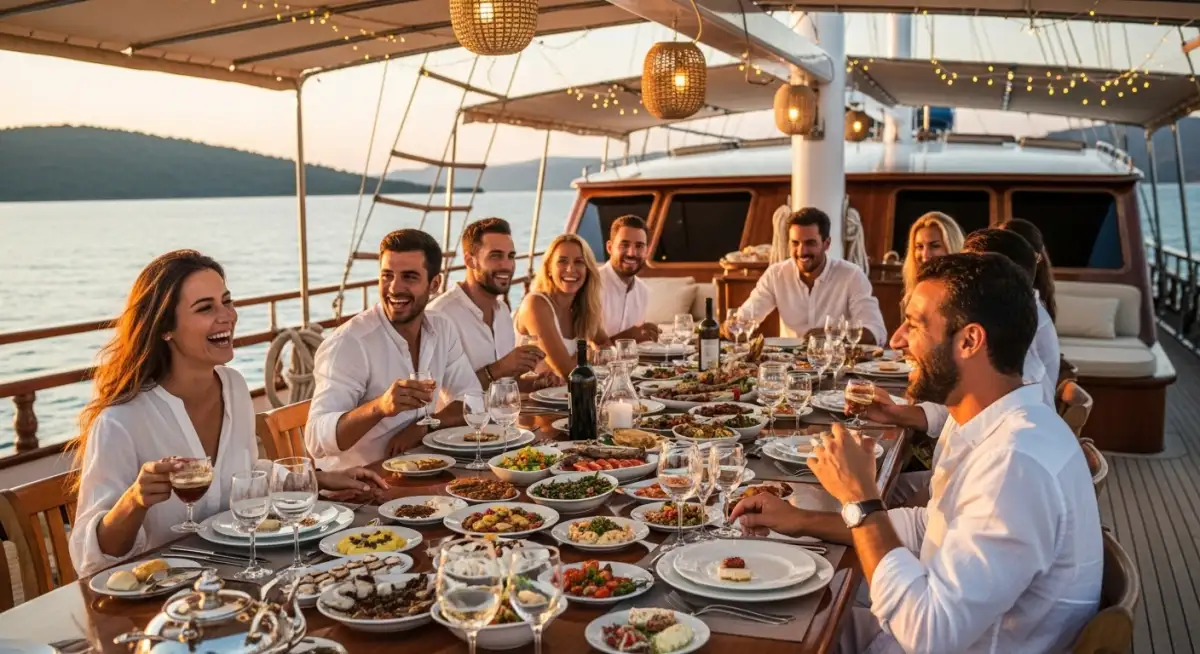
What surprises first-timers: how quiet it gets. No engine noise at anchor. No crowds—you're often alone in a bay with just your group.
No decisions beyond "swim now or after lunch?" This absence of stimulation feels strange for a day, then becomes addictive.
The Hidden Costs Nobody Mentions
Base charter rates cover the boat, crew, and fuel for standard routes. What they don't include: food and drinks, harbor fees, water sports equipment on basic vessels, and Greek island permits if crossing borders.
Real Cost Breakdown by Scenario:
Family of 4, Mid-Range Gulet, 7 Days:
- Charter share (4 of 8 guests): €2,800-€3,500 (€700-€875 per person)
- Food & drinks (€50 per person daily): €1,400 (€350 per person)
- Harbor fees (3 nights docking): €120-€150 (€30-€38 per person)
- Water sports equipment: €200 (€50 per person)
- Total per person: €1,130-€1,313
Couple, Luxury Gulet, 10 Days:
- Charter share (2 of 6 guests): €5,000-€6,000 (€2,500-€3,000 per person)
- Food & drinks (€70 per person daily): €1,400 (€700 per person)
- Harbor fees (4 nights): €160-€200 (€80-€100 per person)
- Greek island permits: €300 (€150 per person)
- Total per person: €3,430-€3,950
At €50 per person daily, you get standard Turkish meals with fresh fish, seasonal vegetables, and breakfast spreads. The €70 daily rate includes premium ingredients, international dishes, premium alcohol, and special dietary accommodations. You can bring your own alcohol to save €15-€20 daily per person. Some operators allow provisioning your own food for 30-40% savings, though you lose the convenience.

Budget €1,500-€2,500 per person weekly for a mid-range sailing experience, including charter share, food, and extras. Luxury versions run €2,500-€4,000 per person. These ranges assume 6-8 passengers splitting costs—smaller groups pay more per person.
Here's what charter operators downplay: shoulder season (May, June, September, October) offers 30-40% lower rates with better weather than peak summer. July-August brings 35-40°C heat and crowded bays. We've seen groups switch their August booking to September after one sweltering day.
How to Book Your First Coastal Voyage
Booking a Mediterranean sailing experience requires more research than typical vacations. The Turkish Riviera mixes reputable operators with questionable ones. Here's how to navigate it successfully.
Reputable Operators to Consider
De Yachting - Based in Bodrum with several years of yacht charter experience, De Yachting specializes in Turkish Riviera routes with a verified fleet of carefully selected gulets and motor yachts. They offer transparent pricing, English-speaking support, and detailed vessel specifications. Their team has extensive knowledge of all charter aspects, whether it's luxury mega yacht charter, motor yacht charter, gulet charters or private yacht charter. Best for first-timers wanting hand-holding through the process.
Booking Timeline
- 6-8 months ahead: Book for peak July-August, especially for larger groups (8+ guests)
- 3-4 months ahead: Shoulder season (May, June, September, October) bookings
- 4-6 weeks ahead: Last-minute deals possible, but limited vessel choice
Must-Ask Questions Before Paying Deposit
- "What's included in the base rate?" - Clarify fuel limits (typically 4-6 hours daily cruising), crew gratuities (10-15% expected), and cleaning fees
- "Can we see the actual vessel photos?" - Request recent images, not brochure shots. Video walkthrough is ideal
- "Who's the captain and how long has he worked this route?" - Experience matters. Captains with 10+ years know every hidden bay
- "What's your cancellation policy?" - Standard: 30% deposit non-refundable, 70% final payment due 30 days before departure
- "Do you have liability insurance and Turkish tourism license?" - Legitimate operators show documentation immediately
Red Flags to Avoid
- Prices 40%+ below market (€4,000 weekly for 6-cabin gulet = suspicious)
- No physical office address in Turkey
- Pressure to pay full amount upfront
- Vague answers about vessel specifications
- No guest reviews on independent platforms
Expect to pay 30-50% deposit when booking, with final payment due 4-6 weeks before departure. Use credit cards for deposit protection when possible. For De Yachting, contact them at info@deyachting.net or +90 (541) 861 00 11 to discuss your charter needs and get detailed quotes for your preferred dates.
Modern Variations on the Theme
The traditional Mediterranean sailing concept spawned several variations. Some companies offer "mini cruises"—3-4 day trips for those with limited time. Others specialize in themed voyages: yoga weeks, diving expeditions, or photography-focused itineraries.
Corporate groups now book gulets for team building, combining the sailing philosophy with meeting spaces and WiFi. Families request kid-friendly routes with shallow bays and water toys. Couples want romantic itineraries with sunset spots and quiet anchorages.
The most interesting development: digital nomads booking month-long charters. They work mornings from the deck, explore afternoons, and move to new locations weekly. This mirrors Cevat Şakir's original vision more closely than standard week-long charters—using the sea as a base for life, not just vacation.
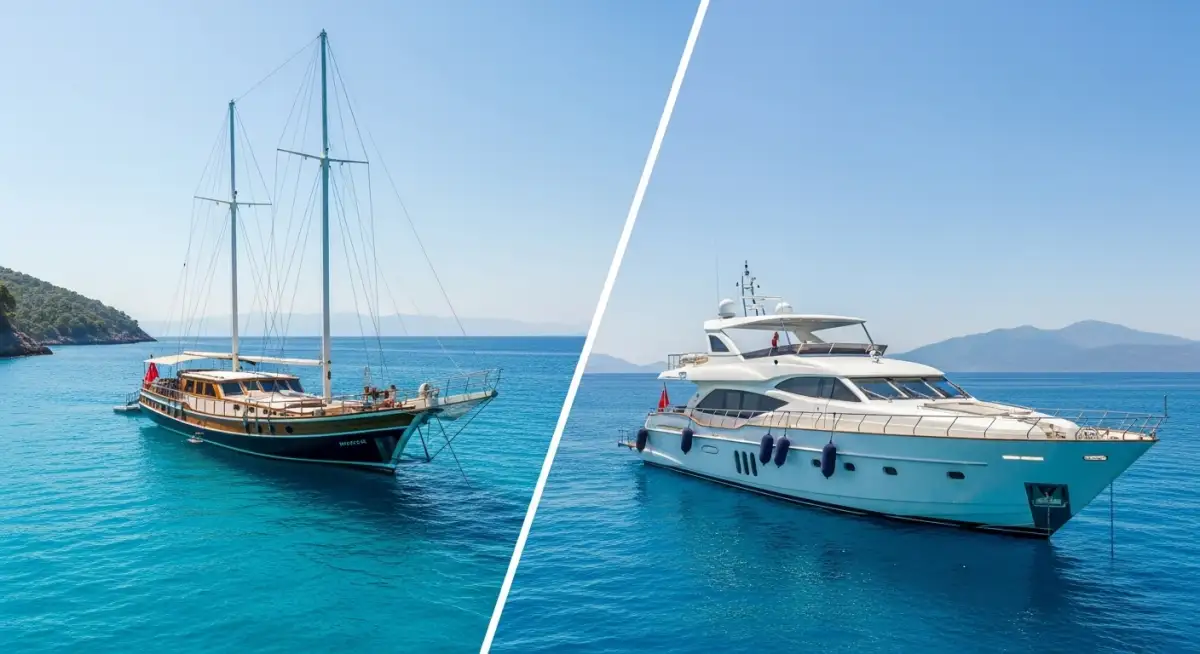
Choosing Between Gulet Types
Traditional wooden gulets offer authentic Mediterranean sailing but lack some modern comforts. They're slower (6-8 knots cruising), noisier, and require more maintenance. Their advantage: classic lines, character, and lower charter rates.
Motor yachts branded as "gulets" provide speed (12-15 knots), stability, and luxury amenities. You'll cover more distance, reach distant Greek islands easier, and enjoy air-conditioned cabins. The trade-off: less sailing, more engine noise, and you've lost some connection to the original coastal tradition.
For first sailing experiences, we recommend traditional gulets on shorter routes like Bodrum itineraries. You'll understand why Cevat Şakir fell in love with this pace. Return trips can explore motor yacht options if you want to reach the Greek islands or cover more territory.
The Philosophy That Endures
Cevat Şakir wrote that Turkish sailing adventures teach you to "read the sea" rather than clocks. This sounds romantic until you experience it. You'll notice wind patterns, current changes, how light shifts through the day. Time becomes elastic—mornings feel endless, afternoons disappear.
This mindset challenges modern travel habits. No checking off sites. No "doing" Turkey. Just being on water, moving slowly through one of the world's most historic coastlines.
Ancient cities crumble on hillsides. Sunken harbors reveal themselves in clear water. Groups of friends share meals on deck as the sun sets over the Aegean and Mediterranean coasts.
The lasting appeal isn't the destinations—though Turkey's coast offers incredible natural beauty. It's the permission to slow down. To let weather and whim determine your route. To rediscover what Cevat Şakir found in 1925: freedom from schedules feels revolutionary in any era.
References
- Guernica Magazine - "Journey in Blue: Myths of the Mediterranean" https://www.guernicamag.com/journey-in-blue-myths-of-the-mediterranean/
- Studies in Travel Writing - "Mavi Yolculuk (Blue Voyage): A Journey of Self-Discovery during the Early Decades of the Turkish Republic (1945–1969)" https://www.tandfonline.com/doi/abs/10.1080/13645145.2012.728022
- GeoJournal - "Claiming civilizations: The geographical imagination of blue anatolianism in modern Türkiye" https://link.springer.com/article/10.1007/s10708-024-11212-5
- International Journal of Nautical Archaeology - "Ancient Mediterranean Sewn-Boat Traditions" https://www.tandfonline.com/doi/full/10.1111/1095-9270.12337
- Go Türkiye Official Tourism Portal - "Sail the Enchanted Coast Aegean" https://aegean.goturkiye.com/sail-the-enchanted-coast





